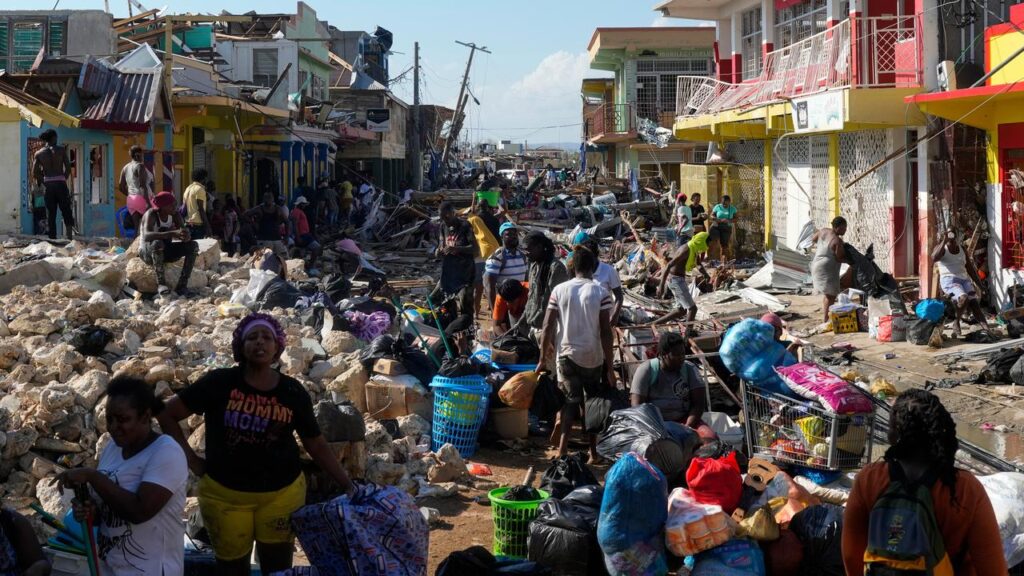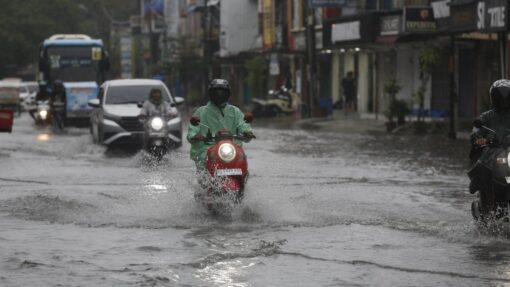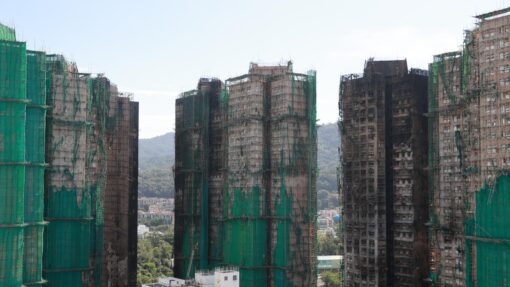Death toll climbs in Caribbean as hurricane moves north
Zahra Burton, Steven Aristil and Dave Sherwood |

Hurricane Melissa’s confirmed death toll has climbed to 49 after wreaking destruction across much of the northern Caribbean and picking up speed as it headed past Bermuda in the North Atlantic.
Authorities in Haiti, which was not directly hit but nevertheless suffered days of torrential rains from the slow-moving storm, reported at least 30 deaths and 20 more missing.
At least 23 people, including 10 children, died in Haiti’s southern town of Petit-Goave when a river burst its banks.

Roads, houses and farmlands were also damaged by the rains.
Jamaica’s information minister confirmed at least 19 deaths, but said authorities were continuing search and rescue efforts.
The storm left hundreds of thousands without power, ripped roofs of buildings and scattered fields with rubble.
Jamaica’s military has called on reserve personnel to report for duty to help with relief and rescue operations.
Melissa struck southwestern Jamaica on Tuesday as a powerful category five hurricane, the Caribbean nation’s strongest-ever storm to directly hit its shores, and the first major hurricane to do so since 1988.
Forecasters at AccuWeather said it tied in second place for strongest-ever Atlantic hurricane on record in terms of wind speed when in struck land.

The forecaster estimated $US48 billion to $US52 billion ($A73 billion-$A79 billion) in damage and economic loss across the western Caribbean.
Melissa also hit eastern Cuba, where some 735,000 evacuated, but no deaths were reported there, despite extensive damage to homes and crops.
Late on Thursday, Melissa was a category two storm 264km west of the North Atlantic British island territory of Bermuda, according to the US National Hurricane Center, packing maximum sustained winds of 161km/h.
Residents in Bermuda had remained calm as the storm was expected to give the island a relatively wide berth.
In the Bahamas, which Melissa cut through on Wednesday night, authorities lifted storm warnings but would decide by Saturday whether the hundreds of people who evacuated off affected islands could return home.
The front page of Thursday’s Jamaica Observer newspaper read: “DEVASTATION.”

Densely populated Kingston was spared the worst damage.
Its main airport was set to reopen on Thursday, as was the capital’s port.
Relief flights and aid had begun to flow into Jamaica’s airports, authorities said.
But across the country, more than 130 roads remained blocked by trees, debris and electric lines, authorities said, forcing the military to clear roadways on foot into isolated areas, with ambulances following close behind.
More than 70 per cent of electrical customers in Jamaica remained without power as of Thursday morning, said Energy Minister Daryl Vaz.
Scientists say hurricanes are intensifying faster with greater frequency as a result of warming ocean waters caused by greenhouse gas emissions.

Many Caribbean leaders have called on wealthy, heavy-polluting nations to provide reparations in the form of aid or debt relief.
US forecaster AccuWeather said Melissa was the third most-intense hurricane observed in the Caribbean, as well as its slowest-moving, compounding damages for affected areas.
US search and rescue teams were headed for Jamaica on Thursday to assist in recovery efforts, Jamaican authorities said.
Secretary of State Marco Rubio said the US was prepared to offer “immediate humanitarian aid” to the people of Cuba, a long-time US foe.
Authorities in Cuba – which Melissa struck in the night as a category three storm – said they were “awaiting clarification on how and in what way they are willing to assist”.
At least 241 Cuban communities remained isolated and without communications on Wednesday following the storm’s passage across Santiago province, affecting as many as 140,000 residents.
Reuters


